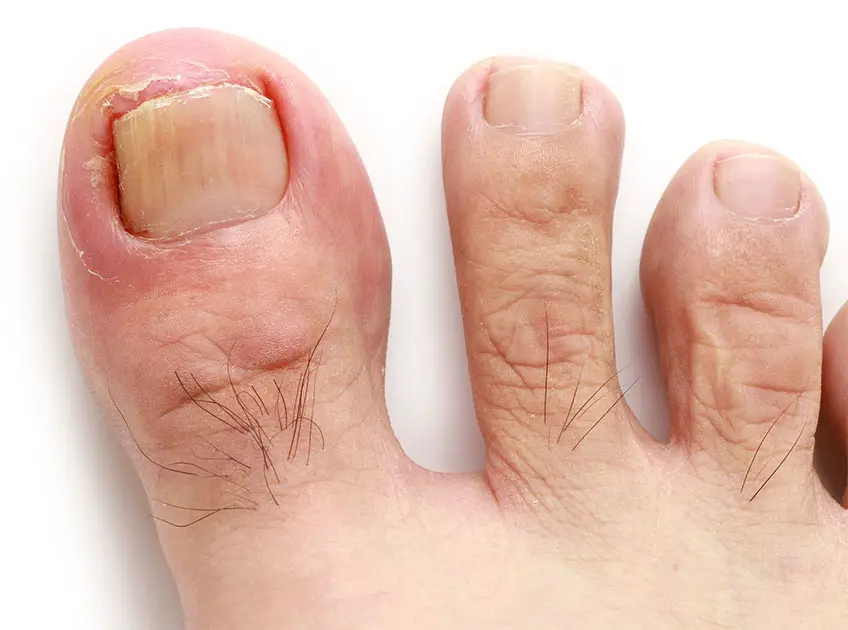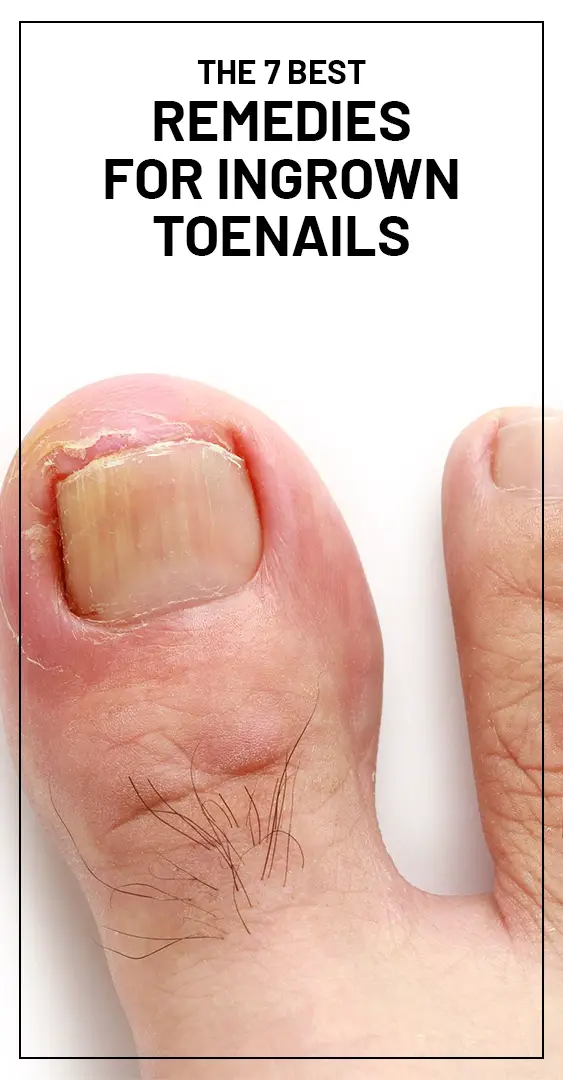
Important: This article is for informational purposes only. Please read our full disclaimer for more details.
An ingrown toenail is a common condition that can be painful and irritating. It occurs when the corner or side of your toenail grows into the soft tissue of your toe. This can happen if you wear ill-fitting shoes, have thick toenails, or don’t trim your nails properly. Ingrown toenails can usually be treated at home with simple home remedies. However, in some cases, you may need to see a doctor for treatment.
What Are The Causes For Ingrown Toenails?

There are several factors that can contribute to ingrown toenails, including:
- Wearing shoes that are too tight or narrow
- Having thick toenails
- Stubbing your toenail
- Not trimming your nails properly
- Trauma to the nail
- Infection
What Are The Symptoms of Ingrown Toenails?
The most common symptom of an ingrown toenail is pain. You may also experience redness, swelling, and inflammation around your toenail. If the ingrown toenail is left untreated, it can lead to an infection.
Home Remedies for Ingrown Toenails
There are several home remedies that you can try to treat an ingrown toenail, including:
- Soaking your foot in warm water
- Wearing loose-fitting shoes
- Trimming your nails properly
- Avoiding tight shoes
- Putting a cotton ball under your toenail
- Applying an antibiotic ointment
- Taking over-the-counter pain medication
1. Soaking Your Foot in Warm Water

According to a research, Soaking your foot in warm water can help reduce pain and inflammation. It can also help soften the skin around your toenail, making it easier to trim. [1]
[ Recommended: How to Get Rid of an Ingrown Toenail at Home? ]
2. Wearing Loose-Fitting Shoes
It is a known fact that wearing shoes that are too tight can contribute to ingrown toenails. Wear shoes that are loose-fitting and comfortable to help prevent ingrown toenails.
3. Trimming Your Nails Properly
Make sure to trim your nails straight across and avoid rounding the corners. Doing this will help prevent ingrown toenails.
4. Use Toe Braces
Based on a research, Toe braces can also be helpful in the treatment of ingrown toenails. They work by holding the toenail in place and preventing it from growing into the skin. [2]
5. Putting a Cotton Ball Under Your Toenail
According to some researchers, Putting a cotton ball under your toenail can help prevent the nail from growing into the skin. It can also help reduce pain and inflammation. [3]
6. Applying an Antibiotic Ointment
Doctor’s suggest that, If you have an infection, you can apply an antibiotic ointment to the affected area. This will help kill the bacteria and prevent the infection from spreading. [4]
7. Taking Over-the-Counter Pain Medication
If you’re in pain, you can take over-the-counter pain medication, such as ibuprofen or acetaminophen. This will help reduce inflammation and pain. This must be done only after consulting a doctor.
Prevention Tips for Ingrown Toenails
There are several things you can do to prevent ingrown toenails, including:
- Wearing loose-fitting shoes
- Trimming your nails properly
- Avoiding tight shoes
- Putting a cotton ball under your toenail
When to Visit a Doctor?
If home remedies don’t work, you may need to see a doctor. They can prescribe medication or perform a minor surgery to remove the ingrown toenail. In some cases, an infection may require antibiotics. If you have diabetes, it’s important to see a doctor if you develop an ingrown toenail, as it can lead to serious complications.
Ingrown toenails can usually be treated at home with simple home remedies. However, in some cases, you may need to see a doctor for treatment. If home remedies don’t work, you may need to see a doctor. They can prescribe medication or perform a minor surgery to remove the ingrown toenail.
In some cases, an infection may require antibiotics. If you have diabetes, it’s important to see a doctor if you develop an ingrown toenail, as it can lead to serious complications.
Related Posts
- How Long Does It Take for Hydrogen Peroxide to Kill Toenail Fungus?
- Apple Cider Vinegar and Epsom Salt for Toenail Fungus: Does it Work?
- Nail Psoriasis Vs Fungus – Differences , Symptoms and When to See a Doctor?
- How to Strengthen Nails Naturally at Home?
- How to Get Rid of Yellow Nails at Home?
- 10 Best Foods for Nail Growth and Strength
- How to Use Coconut Oil for Stronger and Healthier Nails?
- How to Repair Damaged Nails
- How Do You Take Off Acrylic Nails Using Acetone?
- How To Remove Acrylic Nails With Hot Water?
- How to Get Rid of an Ingrown Toenail at Home?
- The 10 Best Home Remedies for Toenail Fungus
- Ridges in Fingernails – Types, Causes and Treatment
















